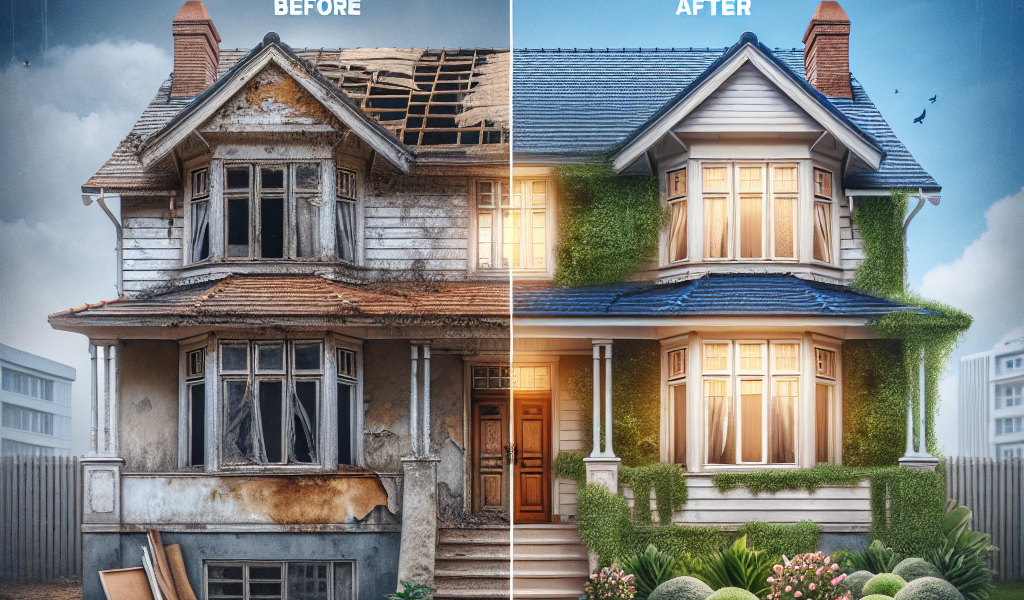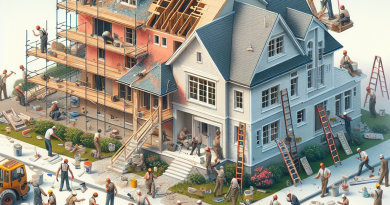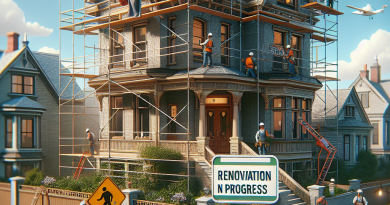Green Rejuvenation: How Sustainable Renovations are Shaping the Real Estate Industry
Title: Green Rejuvenation: How Sustainable Renovations are Shaping the Real Estate Industry
In today’s rapidly changing world, the real estate industry is undergoing a significant transformation. With a growing awareness of environmental issues and a shift towards sustainability, green renovations have become a key component in shaping the future of the industry. Sustainable renovations not only benefit the environment but also offer a multitude of advantages for property owners, investors, and the community at large.
The Rise of Sustainable Renovations
Green rejuvenation, also known as sustainable renovations, involves upgrading existing buildings to make them more energy-efficient, environmentally friendly, and sustainable. This trend has gained traction in recent years as more property owners and developers recognize the importance of reducing their carbon footprint and operating costs.
One of the key drivers behind the rise of sustainable renovations is the increasing demand for eco-friendly properties from both homeowners and tenants. In a world where climate change is a pressing issue, individuals are becoming more conscious of their environmental impact and are actively seeking out sustainable living options. This has created a market niche for green buildings, driving the need for sustainable renovations in the real estate industry.
The Benefits of Sustainable Renovations
There are numerous benefits associated with sustainable renovations, both for property owners and the environment. From reducing energy consumption to improving indoor air quality, green rejuvenation offers a range of advantages that are shaping the future of the real estate industry. Some of the key benefits include:
1. Energy Efficiency: Sustainable renovations focus on improving a building’s energy efficiency through the use of energy-efficient appliances, insulation, lighting, and heating and cooling systems. By reducing energy consumption, property owners can lower their utility bills and decrease their carbon footprint.
2. Environmental Impact: Green rejuvenation helps to minimize a building’s environmental impact by reducing water usage, waste generation, and greenhouse gas emissions. This not only benefits the environment but also contributes to a more sustainable future for generations to come.
3. Increased Property Value: Sustainable renovations can enhance a property’s market value and appeal to potential buyers and tenants. Green buildings are highly sought after in today’s real estate market, leading to higher resale values and rental rates.
4. Health and Wellbeing: Sustainable renovations focus on creating a healthier indoor environment by using non-toxic materials, improving air quality, and optimizing natural light and ventilation. These factors can enhance the health and wellbeing of occupants, resulting in increased productivity and overall satisfaction.
5. Government Incentives: Many governments offer incentives and rebates for sustainable renovations, such as tax credits, grants, and low-interest loans. These incentives can help offset the initial costs of green rejuvenation and make it a more attractive investment for property owners.
Sustainable Renovations in Action
Green rejuvenation is not just a trend – it is a movement that is reshaping the real estate industry. From residential homes to commercial buildings, sustainable renovations are being implemented across a wide range of properties to promote environmental sustainability and energy efficiency. Some common sustainable renovation practices include:
1. Energy-Efficient Upgrades: This may include installing solar panels, energy-efficient windows, LED lighting, and smart thermostats to reduce energy consumption and lower utility costs.
2. Water Conservation: Sustainable renovations may involve the installation of water-saving fixtures, such as low-flow toilets, faucets, and showerheads, as well as rainwater harvesting systems to reduce water usage and promote conservation.
3. Recycling and Waste Management: Sustainable renovations often incorporate recycling and waste management practices, such as using recycled materials, reducing construction waste, and implementing composting programs to minimize environmental impact.
4. Green Building Certifications: Property owners may seek green building certifications, such as LEED (Leadership in Energy and Environmental Design) or ENERGY STAR, to demonstrate their commitment to sustainability and attract environmentally conscious buyers and tenants.
The Future of Sustainable Renovations
As the demand for sustainable living continues to grow, sustainable renovations are poised to play a significant role in shaping the future of the real estate industry. Property owners, developers, and investors are increasingly recognizing the value of green rejuvenation in creating sustainable, energy-efficient properties that benefit both the environment and the bottom line.
In conclusion, green rejuvenation is not just a passing trend – it is a fundamental shift in the real estate industry towards sustainability and environmental stewardship. By prioritizing sustainable renovations, we can create a more resilient, energy-efficient built environment that benefits both current and future generations. The time to embrace green rejuvenation is now, as it is shaping the future of the real estate industry in a positive and impactful way.






